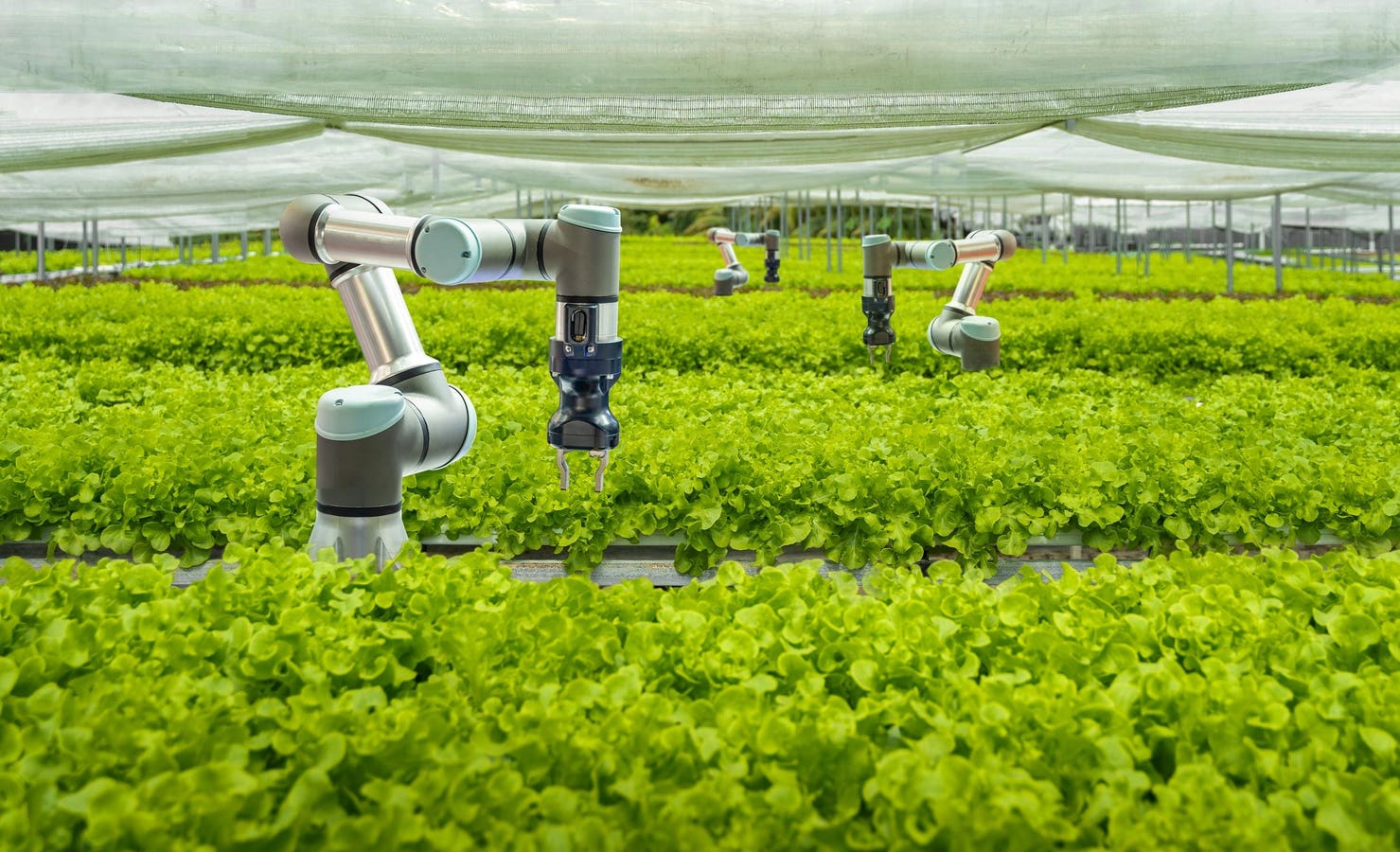Agriculture is long rooted in traditional methods and processes. Over the millennia, agriculture has undergone significant transformations with the introduction of technology, from human and animal-based labor to increasingly automated farm equipment and bioengineered precision agriculture. Now agriculture is experiencing yet another transformation with AI being increasingly integrated into a wide range of agricultural equipment and processes.
The global demand for food only continues to rise due to increased populations and arable land becomes increasingly scarce. Advances to technology and processes are helping to optimize yields and produce healthier crops, control pests, monitor soil and growing conditions, and streamline a wide range of processes across the entire food supply chain. AI is helping with everything from precision farming to predictive analytics, helping transform how we grow, manage, harvest, and transport crops.
Maximizing Efficiency on Farms
Precision farming, also called precision agriculture, is the concept of using AI technology to improve harvest quality and accuracy, and has had a significant impact on framing. AI is helping to detect diseases in plants, detect pests that may be a nuisance, and identify poor plant nutrition. By monitoring and responding to a variety of different conditions and needs on a farm, precision farming allows farmers to improve efficiency, reduce the use of fertilizers, optimize water consumption, and increase overall crop yield. By leveraging AI to monitor and optimize crop health, soil conditions, and resources at a highly granular level, significant efficiencies and cost savings occur.
Additionally, autonomous systems are helping farmers get a more comprehensive view of their entire farm, especially on large farms that aren’t easily walkable by humans. AI-powered drones and satellite imagery are able to capture detailed images of fields, allowing farmers to identify issues in real time such as pest infestations, nutrient deficiencies, or water stress. This data can guide farmers in making informed decisions on where to apply fertilizers, pesticides, or irrigation helping to reduce waste and enhance crop productivity.
Analyzing Farm Data for Better Decision Making
Agriculture isn’t as backwards technology-wise as some might assume. Farms produce tons of data daily. This data is collected across the entire farm coming from farm machinery, drone imagery, daily weather conditions, and logistics and supply chain management. Since this data is too much for humans to process daily on their own, farmers and agricultural technology workers are turning to AI to help analyze this data to get actionable insights to improve decision-making. For example, AI systems provide farmers with insights into various aspects of their operations, from crop health to supply chain logistics. AI systems are able to quickly analyze all this data from multiple sources helping farmers make informed decisions about when to plant, irrigate, and harvest. This helps farmers use their resources wisely leading to more productive and efficient farming practices.
Forecasting of weather, water, and sunlight is a particularly tricky, but necessary task for farmers. Now with the help of AI, seasonal forecasting models are playing an enhanced role in agriculture. These models can predict weather patterns weeks and months in advance, allowing farmers to prepare for potential challenges with more lead time. Increased forecasting is invaluable particularly for small farms in developing countries where access to data and resources is often limited. This lead time can be the difference between a bountiful harvest and a significant loss.
Autonomous Machinery Reducing farm workload
One of the ultimate goals of artificial intelligence is the ability for machines to operate on their own, with little to no human interaction. This autonomous pattern of AI is being increasingly applied in agriculture. Self-driving tractors, harvesters, and planters equipped with AI and GPS technology are increasingly common on farms. These machines can operate around the clock, perform tasks with a high level of precision and efficiency, and reduce the need for manual labor helping to solve critical farm labor challenges.
One of the recent advancements in this area of autonomous machinery is the development of autonomous tractors that can be controlled remotely via a tablet or smartphone. These AI-driven machines are capable of plowing, planting, and harvesting crops with minimal human intervention, leading to significant cost savings and increased productivity.
While the adoption of AI in agriculture presents numerous opportunities, it also comes with challenges. High initial costs, the need for technical expertise, and concerns over data privacy are some of the hurdles that farmers and ag-tech companies must overcome. As AI technology continues to advance and become more accessible, farms across the world are able to run more efficiently to produce the fundamental staples of our dietary lifestyles.
Read the full article here





